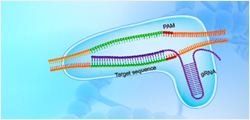TRAIL/TNFRSF10, His, Mouse
Tumor necrosis factor (TNF)-related apoptosis-inducing ligand (TRAIL) is a member of the TNF superfamily that can initiate the apoptosis pathway by binding to its associated death receptors DR4 and DR5. The activation of the TRAIL pathway in inducing tumor-selective apoptosis leads to the development of TRAIL-based cancer therapies, which include recombinant forms of TRAIL, TRAIL receptor agonists, and other therapeutic agents.
| ¥2400 | |
| Z06391-100 | |
|
|
|
|
|
|
|
|
|



































